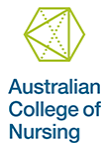Child Development in the Family Context

The purpose of this unit of study is to help students explore child development within the child’s family, culture, and environment.
Nurses working in partnership with infants, children, and their families must have in-depth knowledge and understanding of a child’s physical, emotional, cognitive, and social development and the influences on their development in the early years. This knowledge assists nurses in promoting and strengthening the relationship between young children and their support networks, therefore enabling the attachment process, a fundamental element in healthy development.
Central to the role of a nurse working with young children and families is acquiring growth and developmental assessment skills. Assessing, screening, and monitoring a child’s development throughout the early years provides a good foundation for person-centred health promotion and facilitates early intervention when developmental issues are detected.
Students studying this Unit will consolidate their theoretical learning through a 40-hour professional experience placement in a child and family health setting.
Term : JANUARY, JULY
Hours of Study: 150
Credit Points : 6
Theme 1: Developmental foundations and influences
Evaluate the research, policies, models, and frameworks that provide parameters for assessing screening, and monitoring child development in the early years
Theme 2: Developmental surveillance and health monitoring
Critically analyse the complex social, cultural, and environmental factors that influence developmental outcomes in young children
Theme 3: Developmental progression in infancy & toddlerhood
Apply advanced knowledge of developmental foundations and theories to support infants’ and children’s biopsychosocial and emotional needs
Theme 4: Developmental progression in the pre-school years
Interpret the signs of perinatal distress that can influence infant-parent attachment and infant mental health and wellbeing
Theme 5: Supporting optimal development
- Implement effective communication strategies that strengthen partnerships with parents, families, community networks
- Reflect on the nurse’s role in facilitating parents’ understanding of their child’s developmental needs through health education and parenting skill development
- Anaesthesia Fundamentals | Anatomy | Anatomical Di...
- Posted By eIntegrity Healthcare e-Learning
- Posted Date: 2024-11-25
- Location:Online
- This session provides an outline of the important differences between the adult and the paediatric airways. The overall objective is to give the trainee the understanding of the development of the anatomy of the airway from birth to adulthood, which is ne
- Anaesthesia Fundamentals | Anatomy | Mediastinum a...
- Posted By eIntegrity Healthcare e-Learning
- Posted Date: 2024-11-24
- Location:Online
- This session describes the contents, relations and anatomical divisions of the mediastinum.
- Anaesthesia Fundamentals | Anatomy | Microstructur...
- Posted By eIntegrity Healthcare e-Learning
- Posted Date: 2024-11-24
- Location:Online
- This session will cover the structure of the lungs and pleura at a cellular level. In particular there will be an emphasis on the structure and function relationships which allow gas exchange to occur.
- Anaesthesia Fundamentals | Anatomy | Trachea, Main...
- Posted By eIntegrity Healthcare e-Learning
- Posted Date: 2024-11-24
- Location:Online
- This session describes the structure, relations, blood and nerve supply of the trachea, carina, main bronchi and major bronchopulmonary segments.
- Anaesthesia Fundamentals | Anatomy | Anatomy of th...
- Posted By eIntegrity Healthcare e-Learning
- Posted Date: 2024-11-24
- Location:Online
- This session describes the anatomy of the oral cavity, pharynx and larynx. The nerve supply to the larynx and the implications of damage to these nerves is also described.

